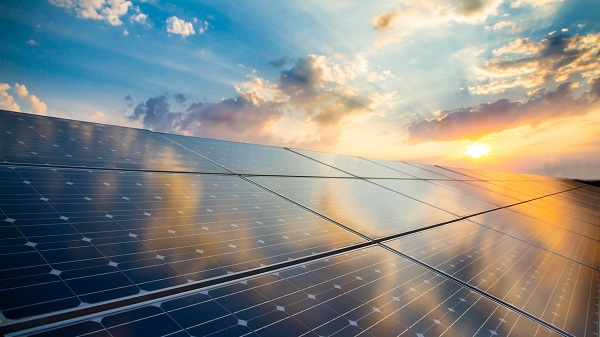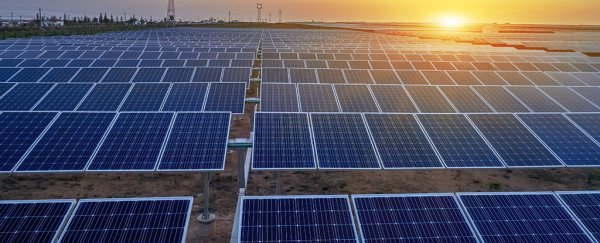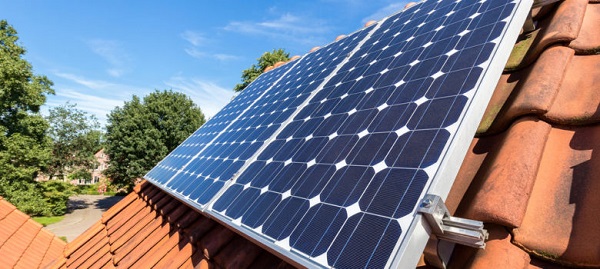Although there are many reasons why more Australian homeowners are looking to go solar – cutting on energy costs and reducing their carbon footprint while increasing property value are the main ones. Regardless of whether your motivation for switching to solar are personal, economic or environmental, installing a solar system to power your home is the right move. However, if you want to get the most out of your off- or on-grid solar system, there are a few variables you have to consider in order to ensure your home’s energy needs are met. It all starts with choosing the right solar panels.

When evaluating your solar panel choice, you’ll come across two main options – monocrystalline and polycrystalline solar panels. While both types perform the same task – harvesting energy from the sun, there are a couple of key differences you need to be aware of. Both types are made from silicon – a durable and abundant material, but the type of silicon solar cell they use isn’t the same. Monocrystalline solar panels are made from a single silicon crystal, whereas polycrystalline solar panels use solar cells made from multiple silicon fragments that are melted together.
Monocrystalline Solar Panels
This type of solar panels is considered the superior solar panel product. The main advantage of monocrystalline solar panels is that they offer higher efficiency and sleeker aesthetics. These materials are made when silicon is made into bars and then cut into wafers. Their name derives from the fact that the silicon used is single-crystal. The use of a single-crystal also means that the electrons which generate the flow of electricity have more room to move, and this is precisely why they’re more efficient than polycrystalline solar panels.

Polycrystalline Solar Panels
While less efficient, this type of solar panels has the advantage of being much more affordable. They have a blue hue instead of the black hue that their monocrystalline counterparts feature. These solar panels are also made from silicon, but instead of using a single silicon crystal, they’re made by many fragments of silicon being melted together to form the wafers in the panel. Polycrystalline panels are also known as multi-crystalline or many-crystal silicon panels. Since there are multiple crystals in each of their cells, there’s far less freedom for the electrons to move, and as a result, their efficiency isn’t on par with the efficiency of monocrystalline cells.
Monocrystalline vs. Polycrystalline
As aforementioned, cutting electricity costs is one of the main reasons for going solar, and regardless of whether you go for monocrystalline or polycrystalline solar panels, you’ll be saving money. The option you decide to go for comes down to three key factors – your finances, personal preference and space constraints.
How you finance your solar system will play a crucial role in determining which type of panels you go for. For instance, if you choose a PPA (power purchase agreement), you’ll be paying per kilowatt-hour for the electricity produced by your solar system. In other words, above any type of equipment you’re offered, your monthly payments will be a determining factor in your savings. On the other hand, if you’re buying the system, paying extra for high-efficiency monocrystalline panels is going to provide higher returns on investment.
If your roof space is limited, then you should prefer higher-efficiency solar panels. That being said, paying extra for the higher-efficient monocrystalline panels that help you get the most out of the electricity production makes more sense. On the other hand, if you have sufficient roof space, or you’re installing a ground-mounted system, then the lower-efficiency polycrystalline panels can be the more economical option.

And of course, you’ll also have to consider your personal preference. If things like the colour of the solar panels matter to you, then you’ll need to keep in mind that monocrystalline and polycrystalline panels look differently. Monocrystalline panels are typically a darker black colour, whereas polycrystalline panels usually have a bluer colour. Further, if where your solar panels are manufactured is important to you, then make sure you know enough about the manufacturer you’re buying from before making the final buying decision.
Other Types of Solar Cell Technologies
Although other types of solar cell technologies make for a very small portion of the solar panel market (commercial and residential panels in particular), they do exist. One such technology, that you may have heard of are thin-film solar panels, which are made from a variety of flexible and lightweight materials. However, thin-film solar panels fall behind crystalline silicon panels in terms of performance and efficiency, which doesn’t make them competitive on the market. These solar panels are used for smaller, off-grid applications, such as powering camping equipment or RVs. Their portability and affordability are what makes them ideal for applications that don’t require a lot of energy production, making them the perfect option for outdoor activities.
